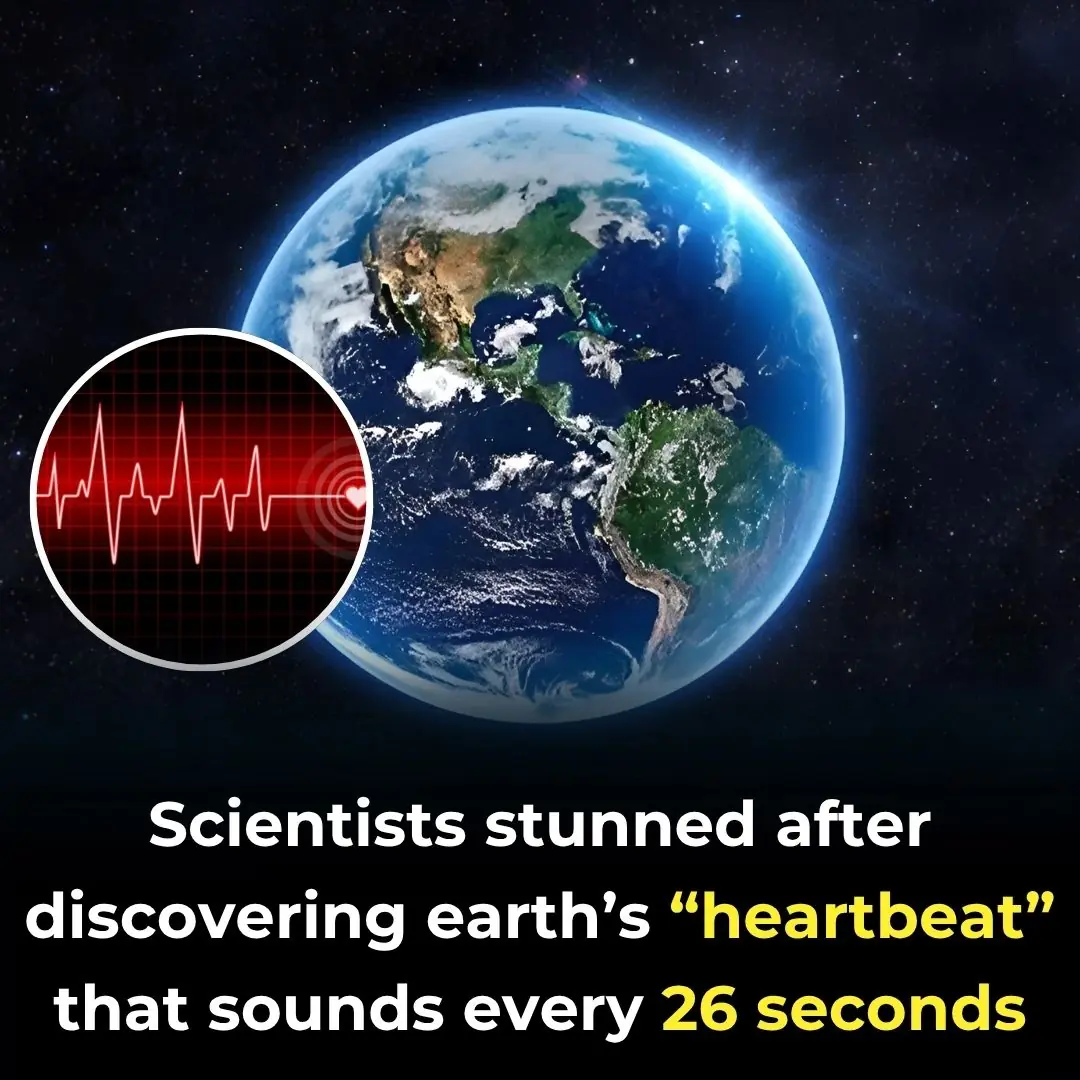It’s the only planet that rolls around the Sun like a barrel. Its seasons last over 20 Earth years. And deep beneath its tranquil blue haze, something strange is happening, Uranus may be brimming with methane in ways scientists never expected.
For decades, the seventh planet from the Sun was boxed neatly into a category: ice giant, made of water, ammonia, and a hint of methane gas that gave it its cyan hue. But that story, shaped by a single spacecraft flyby in 1986, is beginning to unravel. New research suggests that methane may not be a minor atmospheric accent but a defining component of the planet’s interior a thick, slushy layer that makes up more than 10% of its mass.
How does a planet formed from water-poor, rocky debris end up rich in methane? Could its gassy, mushy core explain its peculiar tilt, its erratic magnetic field, or the supersonic winds sweeping across its skies?
The mystery of Uranus is no longer a quiet one. With cutting-edge simulations, long-term telescope observations, and competing theories taking shape, scientists are beginning to see this distant world not as a static ice ball, but as a dynamic laboratory of planetary chemistry one that might hold clues not only to our own solar system, but to the countless ice giants orbiting stars far beyond.
Rethinking Uranus’s Inner World
For most of modern astronomy, Uranus was thought to be a quiet outlier a cold, pale planet at the edge of the solar system, cloaked in icy gases and largely left unexplored. Scientists placed it in the “ice giant” category, assuming its interior resembled that of Neptune: a layered structure of hydrogen, helium, water, ammonia, and a small portion of methane. But as new modeling and data challenge this view, that long-standing classification is starting to crack open.
The turning point came from a collaboration between researchers at the Technion–Israel Institute of Technology and the University of California, Santa Cruz. They developed hundreds of thousands of planetary interior models, each with different proportions of core materials like rock, iron, water, methane then tested which versions most accurately matched Uranus’s real-world size, mass, and observed behavior. The outcome was striking: the best-fit models consistently required far more methane than traditional models ever allowed. In some, methane made up more than 10% of the planet’s total mass, and in others especially those with significant rock and water content it approached 20%.
What made these results even more compelling was their realism. Rather than forcing data to match a preconceived theory, the methane-rich compositions emerged organically from simulations grounded in physics and thermodynamics. They offered a more natural explanation for how a planet could form in a water-poor region of the outer solar system by converting carbon-rich building blocks into methane under intense heat and pressure.
The process may sound exotic, but it’s chemically plausible. As Uranus grew from a chaotic cloud of gas and rock, carbon-bearing planetesimals likely plunged into its thick hydrogen atmosphere. Deep inside the planet’s growing core, the crushing pressure and heat could have triggered reactions between hydrogen and carbon, creating methane in large quantities. Over time, this methane may have become locked into the planet’s mantle in a partially frozen, slushy state like a planetary slurpee made of gas and ice.
This isn’t just a theoretical reshuffling of ingredients. It challenges the idea that Uranus inherited its ice from the outer solar system. Instead, it proposes that Uranus created its own defining element methane through internal processes. In doing so, the planet emerges as a kind of cosmic alchemist, transforming rock and gas into something entirely new.
The Alchemy of Planetary Formation

How does a planet born in a region poor in ice end up with a rich, icy signature? This question sits at the heart of the Uranus mystery and the answer, scientists now suggest, may lie in a remarkable process of planetary alchemy.
As Uranus formed billions of years ago, it swept up countless carbon-rich planetesimals primitive space rocks loaded with organic material. These weren’t the frosty water-laden bodies we once imagined filling the outer solar system. In fact, studies of Kuiper Belt objects, the likely building blocks of Uranus and Neptune, reveal that they are surprisingly water-poor and instead dominated by refractory, carbon-based compounds. This presented a fundamental contradiction: if the ingredients were dry and rocky, how did Uranus end up as an “ice” giant?
The new theory suggests that the planet forged its own methane ice through a deep internal chemical process. As these carbon-rich materials sank into Uranus’s growing hydrogen atmosphere, the extreme heat and pressure of the deep interior catalyzed reactions between hydrogen and carbon. The result was methane (CH₄) formed not from inheritance, but from transformation. In this model, methane isn’t merely a leftover from planetary birth; it’s a product of Uranus’s dynamic and reactive interior, shaped by the violent collisions and accretion of its formative years.
Uri Malamud and his colleagues describe this as a “natural solution” to a long-standing enigma. Instead of trying to make water-poor building blocks fit an outdated model, the researchers let the chemistry lead the way. Their simulations, which varied the ratios of rock, metal, water, and methane, consistently showed that planets with significant methane content best matched Uranus’s observed mass and size. The data didn’t need to be bent to fit the story it told the story itself.
This reimagined formation scenario reframes Uranus not as a passive collector of ices, but as an active chemical crucible. It manufactured its own internal layers through a process that, while invisible to telescopes, left a lasting fingerprint in its present structure. If correct, this model could also help explain the oddities of Uranus’s magnetic field tilted, off-center, and unstable which might be influenced by the distribution of methane within its mantle.
On a broader scale, this new lens doesn’t just shift how we see Uranus; it prompts a reassessment of how planets everywhere might form. If chemical transformation under extreme conditions can reshape a planet’s identity, then the traditional categories of “gas giant,” “ice giant,” and “terrestrial planet” may be more fluid than we think. Planets are not static products of their birthplaces they are dynamic systems, capable of turning raw elements into something entirely unexpected.
Competing Visions Beneath the Clouds

While the methane-rich model offers a compelling rethinking of Uranus’s inner workings, it’s far from the only vision vying for attention. With limited direct observations and only one fleeting spacecraft encounter in 1986, the interior of Uranus remains largely uncharted territory an invitation for scientists to explore multiple plausible explanations for its many mysteries. These competing theories don’t weaken the case for a methane-rich planet; rather, they reflect a vibrant, evolving field of planetary science that thrives on debate and discovery.
One leading alternative model, developed by physicist Burkhard Militzer and colleagues at the University of California, Berkeley, proposes that Uranus has a “fuzzy” core with sharply stratified layers. Instead of a well-mixed mantle, this scenario envisions a planet where different materials remain separated like oil floating atop water. In this model, a lighter, water-rich layer might sit above a denser hydrocarbon-rich layer (which includes methane). Such layering could account for Uranus’s off-kilter magnetic field, which is tilted by nearly 60 degrees and offset far from the planet’s center. If true, it suggests that the physical boundaries between internal layers create the conditions needed to generate a magnetic field unlike any other in the solar system.

Adding further complexity is the exotic but increasingly credible theory of “diamond rain.” Under the extreme pressures and temperatures inside Uranus, methane molecules could be broken apart, freeing carbon atoms that bond into crystalline structures diamonds that fall through the planet’s interior. While it may sound like science fiction, laboratory experiments have replicated these conditions and observed diamond formation. If happening at scale, this phenomenon could play a role in shaping the structure and thermal behavior of the planet’s mantle. Although diamond rain may not define Uranus’s entire identity, it offers a dazzling glimpse into the extreme chemistry at work beneath its clouds.
Importantly, these theories aren’t mutually exclusive. A stratified interior could coexist with diamond formation, and both may be compatible with the methane-rich mantle proposed by Malamud’s team. What unites all these models is their rejection of the oversimplified “ice giant” label a term that now seems inadequate to describe the complexity hidden within Uranus’s layered depths.
Crucially, each theory leads to specific, testable predictions. A layered core would alter the planet’s gravitational field in detectable ways. A diamond-producing mantle would influence internal heat flow. A methane-rich composition would change the expected ratios of elements in the atmosphere. What scientists need now is direct data to test these models against reality.
What We’ve Seen and What We Haven’t

Our modern understanding of Uranus its swirling atmosphere, strange magnetic field, and puzzling internal structure rests on a surprisingly narrow base: a few hours of close-up data from Voyager 2 in 1986 and decades of remote observations, particularly from the Hubble Space Telescope. While these efforts have uncovered tantalizing clues, they’ve also exposed just how incomplete our picture remains.
Voyager 2’s historic flyby offered humanity its first real glimpse of Uranus up close. It revealed a serene, bluish orb, eerily smooth compared to the stormy faces of Jupiter and Saturn. But beneath that calm exterior, something didn’t add up. Uranus emitted far less internal heat than expected far less than Neptune, its near twin in size and composition. Its magnetic field was strangely tilted and off-center, and its rotation axis lay nearly on its side. These oddities hinted at deep, hidden processes but offered no clear answers.
Years later, Hubble’s long-term observations added a new dimension to the mystery. From 2002 to 2022, astronomers tracked the planet’s slow journey through its peculiar seasons, shaped by its 98-degree axial tilt. Unlike Earth’s seasons, which change every few months, Uranus takes 84 Earth years to orbit the Sun meaning each pole experiences 42 years of continuous daylight followed by 42 years of darkness. As the planet tilted, Hubble revealed evolving cloud formations, thickening polar hazes, and dramatic changes in brightness, especially at the north pole as it moved into sunlight. These subtle shifts underscored that Uranus is not a static world it breathes and changes with time.
But even these multi-decade efforts only scratch the surface. A 2024 re-analysis of Voyager 2’s data suggested that the spacecraft may have flown through a plasmoid a huge bubble of magnetized plasma temporarily ejected from the planet’s magnetic field. If true, much of what we thought we knew about Uranus’s magnetosphere might be based on a single, unrepresentative event. It’s a humbling reminder: even the most celebrated data points can mislead when taken out of context.
This is the crux of Uranus’s enigma. We’ve seen snapshots sometimes vivid, sometimes blurry but we’ve never stayed long enough to watch the full story unfold. We don’t know how the atmosphere behaves across layers and seasons, what lies beneath its cloud tops, or how deep interior structures shape its bizarre magnetic and thermal behavior. The truth could challenge or combine the many competing models: methane-rich, layered, diamond-laced, or something entirely unimagined.
The scientific community is keenly aware of this gap. The proposed Uranus Orbiter and Probe (UOP) mission, backed as a top priority by planetary scientists, would be the first to stay and study. Its two components an orbiter and an atmospheric probe would allow researchers to map the planet’s magnetic and gravitational fields in detail and directly sample the composition of its atmosphere. It could determine once and for all how much methane lies beneath the clouds, whether the interior is layered or mixed, and how the magnetic field is generated.
A Planet, a Process, a Perspective

Uranus may be nearly two billion miles away, but the questions it raises strike far closer to home. At first glance, its story seems isolated a remote planet with exotic chemistry and a peculiar tilt. But look deeper, and Uranus becomes a mirror for how we approach the unknown, a case study in the evolution of scientific understanding, and a reminder of the humility needed to challenge long-held assumptions.
The unraveling of Uranus’s methane mystery illustrates a powerful truth: scientific knowledge is never final. For decades, textbooks described Uranus as an “ice giant,” built on the back of a few hours of Voyager 2 data and extrapolated models. That theory wasn’t wrong it was simply provisional, the best interpretation of the data we had at the time. Now, armed with new simulations, long-term observations, and refined instruments, researchers are revisiting those early conclusions and discovering that the planet may be far more complex than imagined. This isn’t failure it’s progress.
What makes Uranus especially significant is how it expands our perspective beyond Earth. Ice giants like Uranus and Neptune are now understood to be among the most common types of planets in the galaxy. Many of the exoplanets we’ve discovered around other stars fall into this size range. Understanding how a world like Uranus forms, behaves, and changes isn’t just about our solar system it’s a key to interpreting distant planetary systems that may harbor the ingredients for life.
On a symbolic level, Uranus’s story resonates with the process of human development. It challenges the idea that identity whether planetary or personal is fixed and unchanging. Just as Uranus may have forged its own methane deep within its chaotic core, so too are we shaped not only by what we inherit, but by what we create from within. Under immense pressure, both planets and people can undergo profound transformation.
The urgency now is clear. To move beyond theory, we need to return to Uranus with purpose. The proposed Uranus Orbiter and Probe mission represents not just an engineering milestone, but an intellectual and philosophical leap. It offers the chance to replace speculation with data, models with measurements, and assumptions with understanding. It would be a statement that no mystery is too distant, and no question too old, to revisit with fresh eyes.
Ultimately, Uranus teaches us something far larger than planetary science. It shows that what we once dismissed as static may be dynamic, what seemed cold may be active, and what we believed complete may only be the beginning. In science as in life the willingness to look again is what transforms knowledge into wisdom.


































